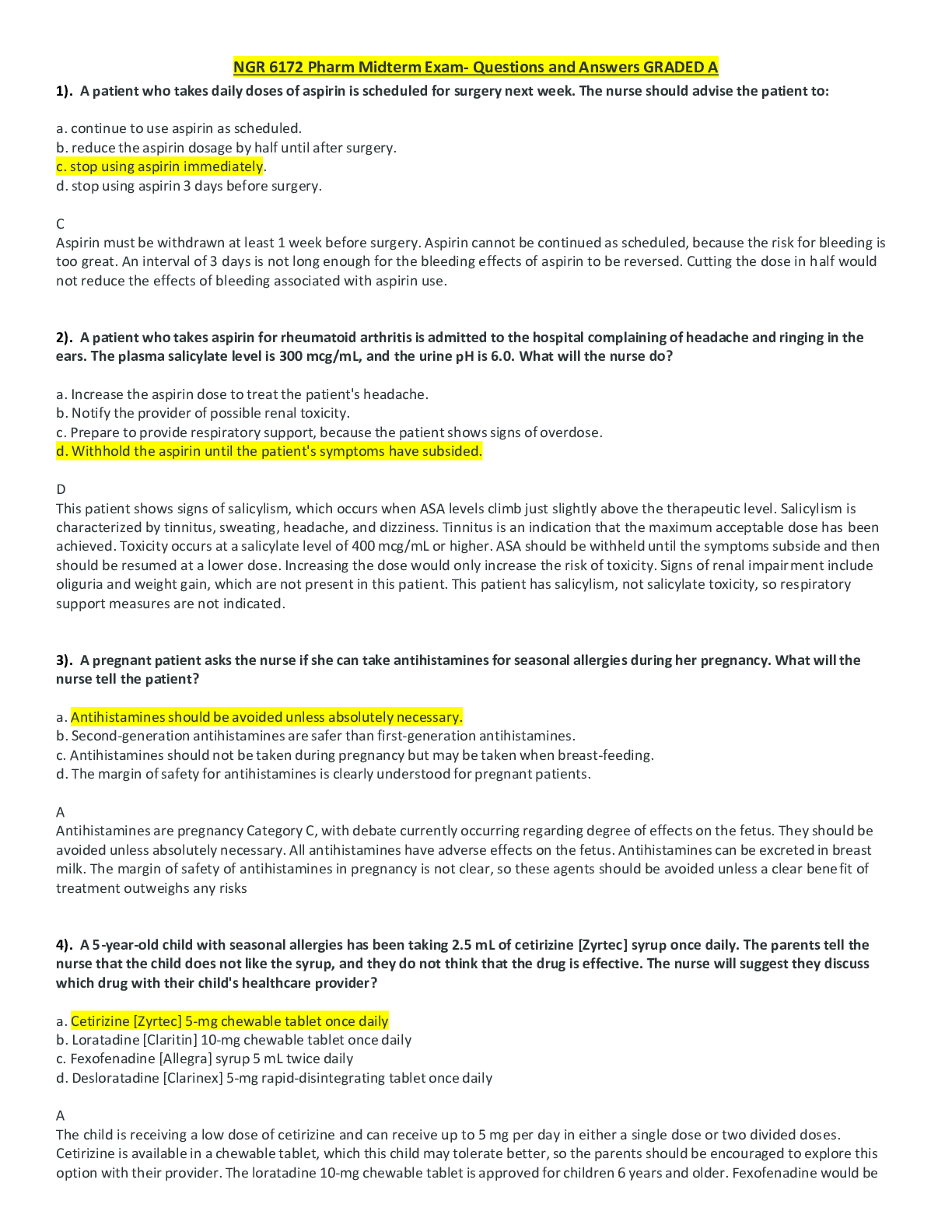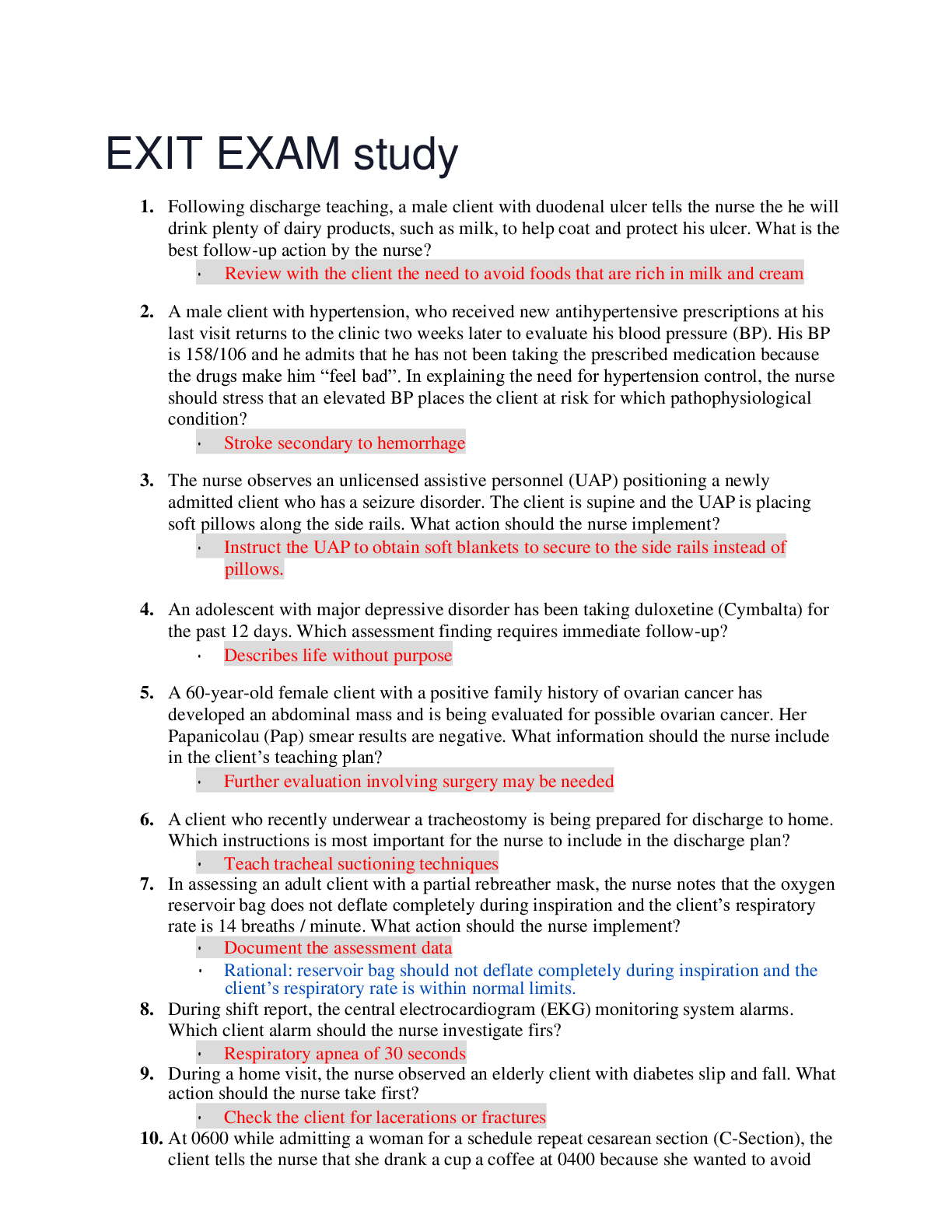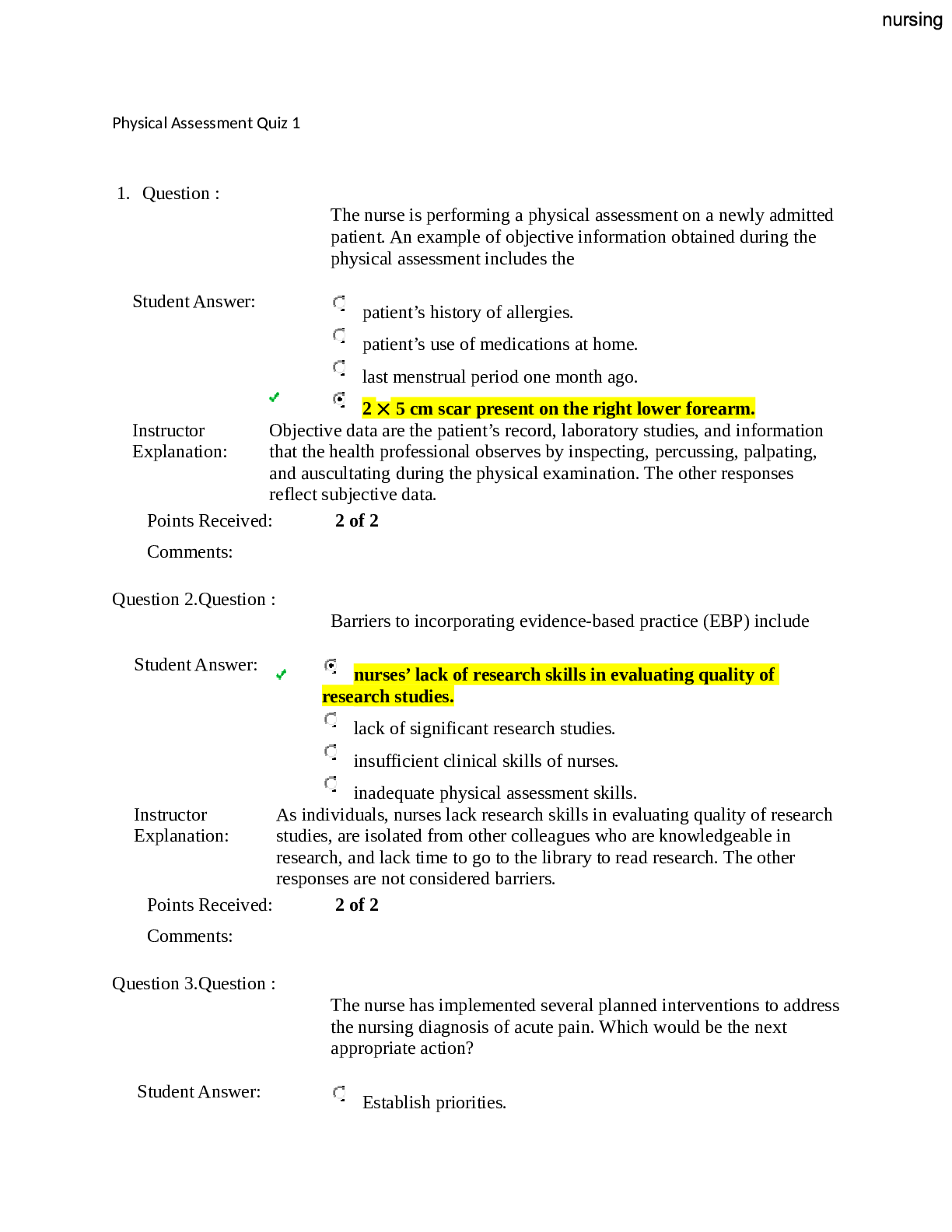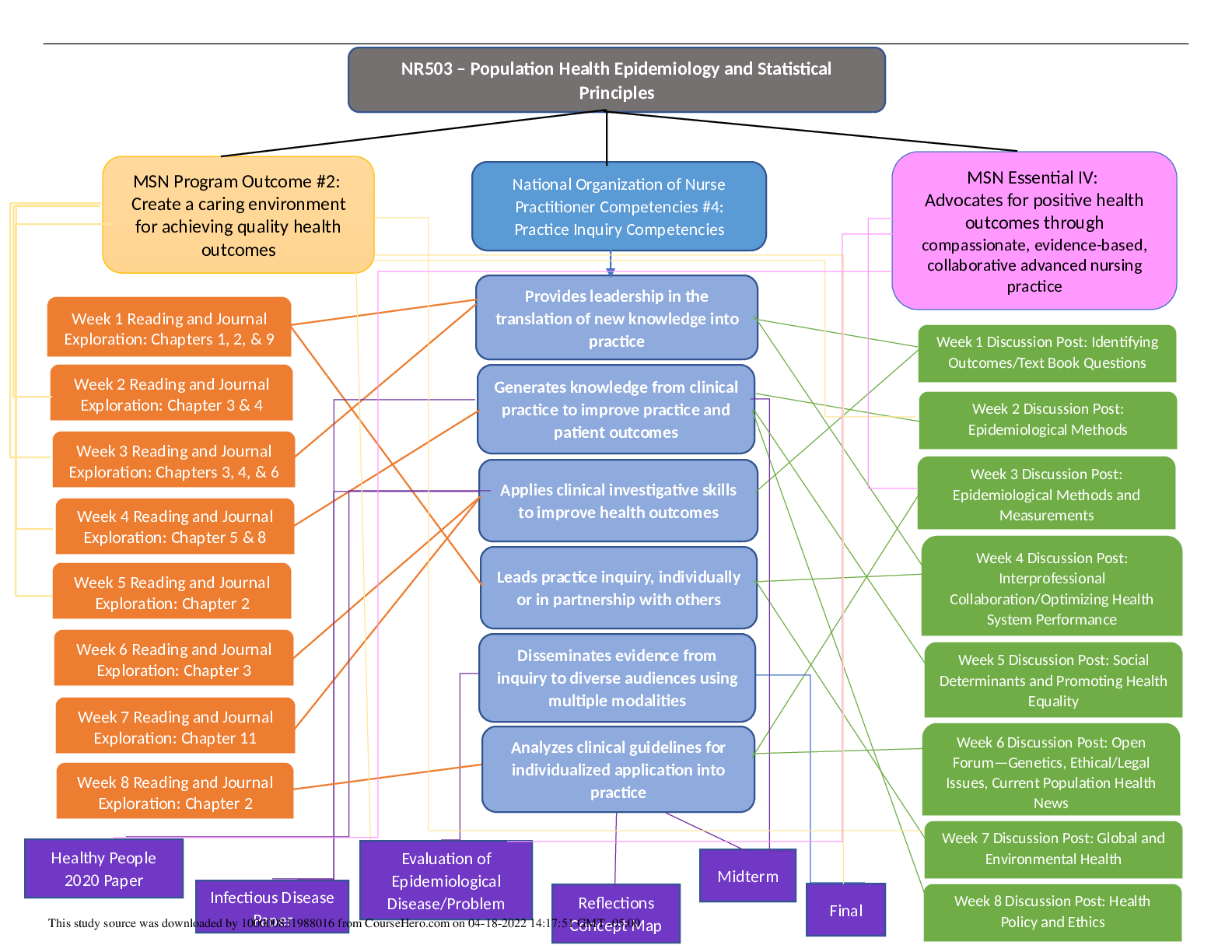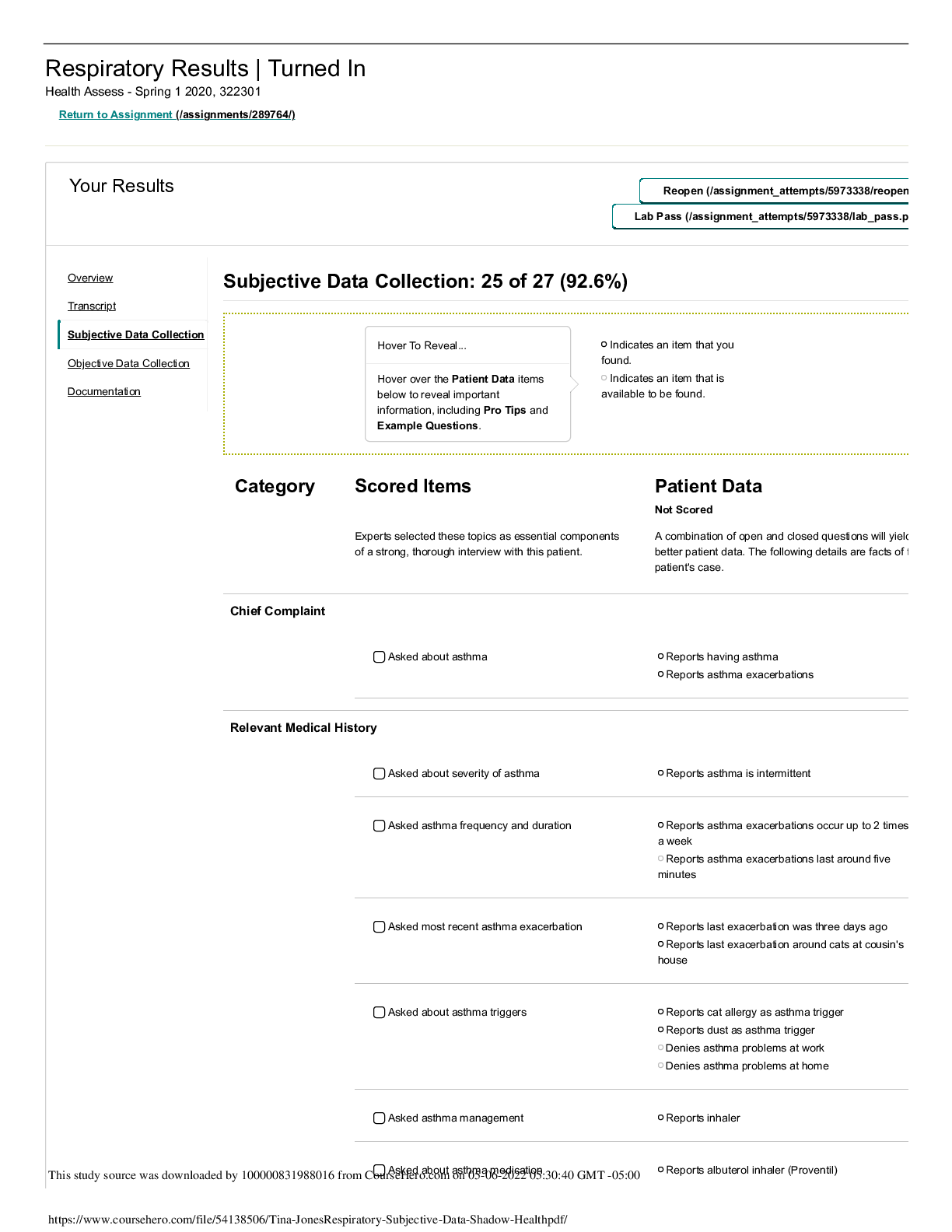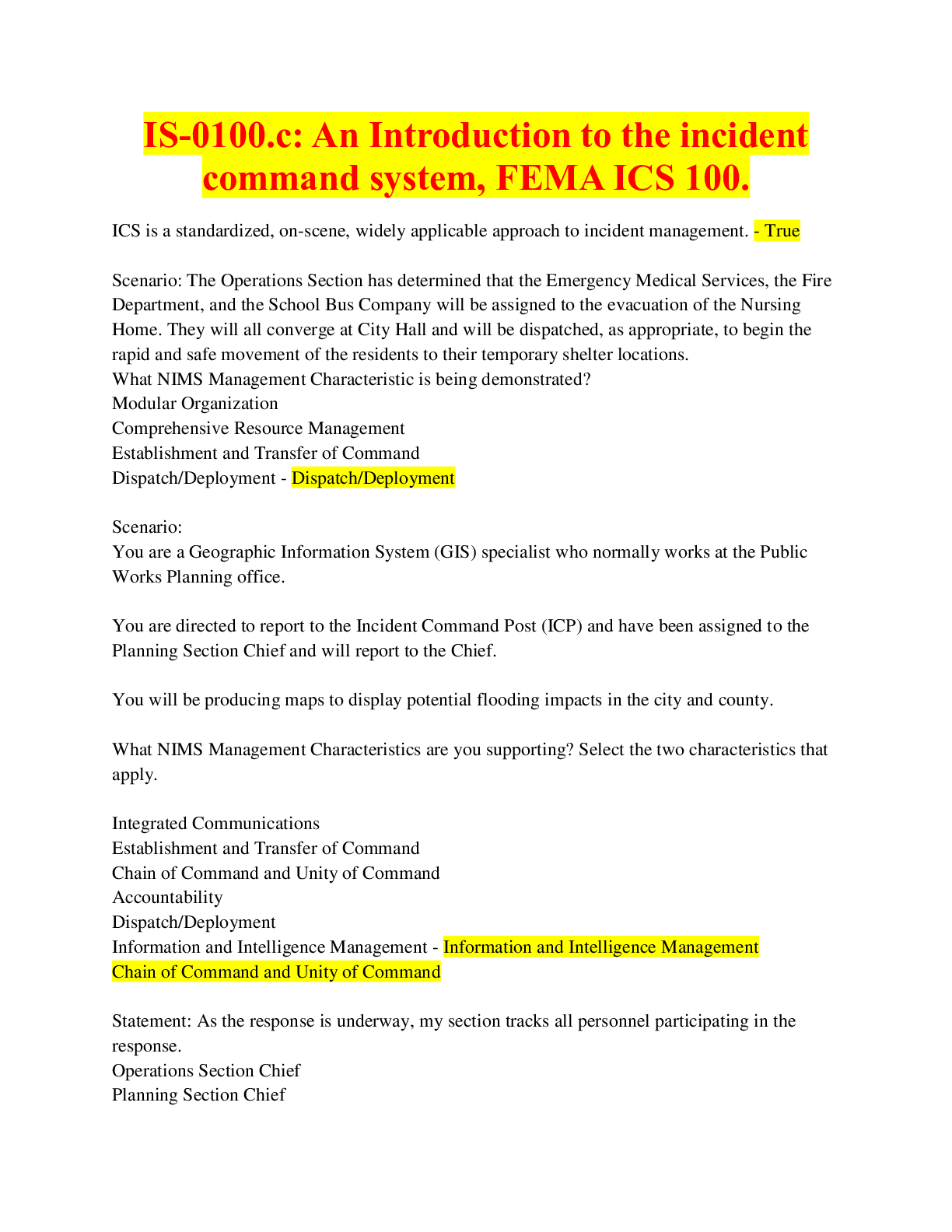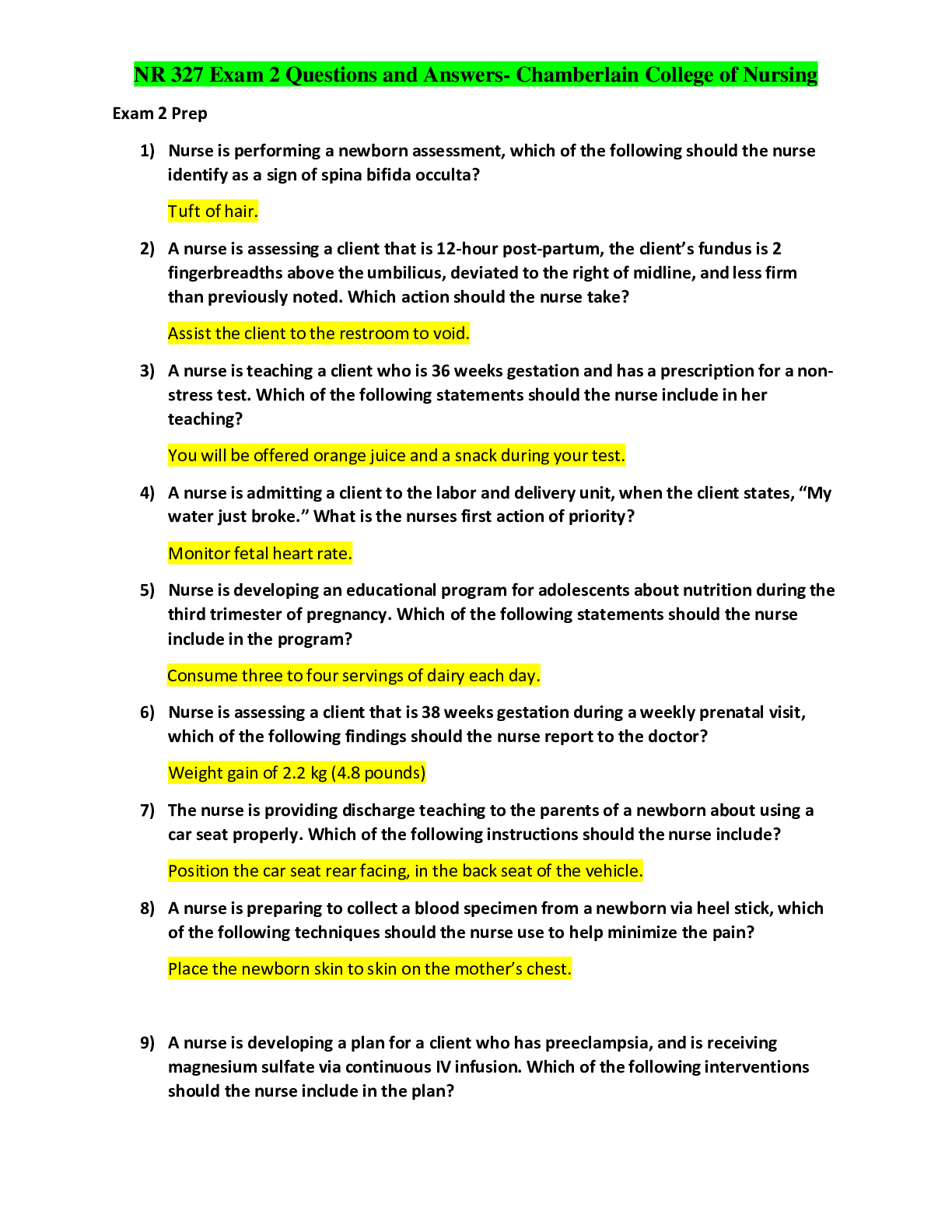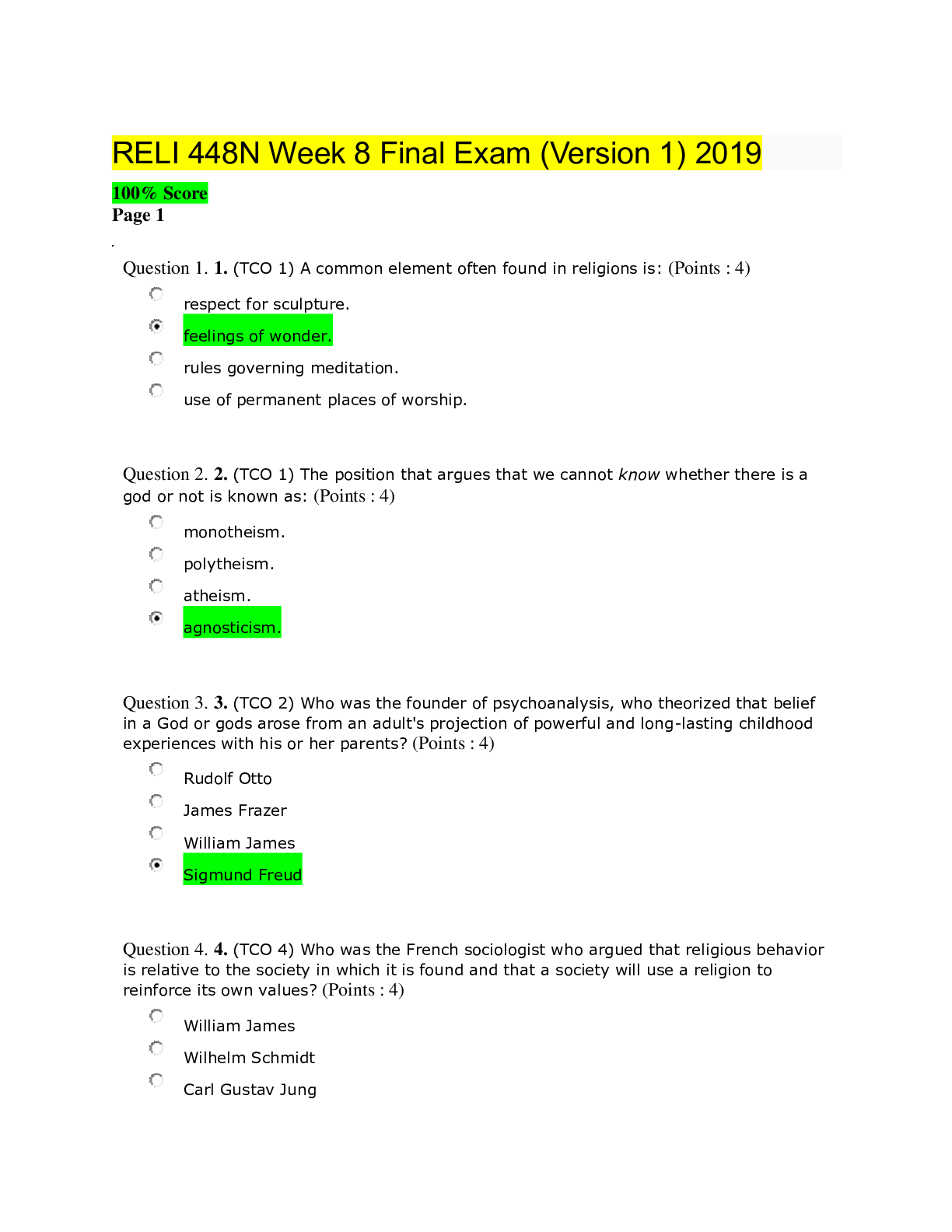Geology > EXAM > SCIN 138 Week 8 Final Exam- Questions and Answers NEW 2021 V2 | American Public University (All)
SCIN 138 Week 8 Final Exam- Questions and Answers NEW 2021 V2 | American Public University
Document Content and Description Below
SCIN 138 Week 8 Final Exam- Questions and Answers NEW 2021 V2 | American Public University-Geologic folding where large areas of the crust are warped upwards, create formations such as the figure belo... w, known as . A.domes B.basins C.thrust faults D.grabens E.scarps Answer Key: A Feedback: Sometimes a large area of crust undergoes upwarping or downwarping, which forms broad, gentle folds. Upwarping of strata forms domes, while downwarping forms large, bowl-like basins. Question 2 of 50 2.0/ 2.0 Points Why is ocean water layered into zones? A.cold water above the thermocline B.Higher salinity of warm water C.Fresh water sinks to the bottom D.all of the above E.none of the above Answer Key: E Feedback: Temperature and salinity differences form the boundary layers, with warm, fresher waters on top, transitional water in the thermocline, and cold, salty water forming the deep zone. Question 3 of 50 2.0/ 2.0 Points What change would not increase the albedo of earth? A.increase in ocean surface area B.increase in ice sheet size C.increase in cloudiness D.increase in snow cover Answer Key: A Feedback: : A surface has a high albedo if it is reflective—these surface are often lighter in color. Question 4 of 50 2.0/ 2.0 Points Which from the list below is a trace fossil? A.a seed B.chitin C.tracks D.none of the above E.all of the above Answer Key: C Feedback: Trace fossils are remains or signs of past life without the actual body of the organism present. They include tracks, burrows, borings and feeding signs, fecal matter, nests, and molds of bodies. Question 5 of 50 2.0/ 2.0 Points The earliest skeletal animals were arthropods in the Cambrian Period. From the list below, identify which is NOT an arthropod. A.trilobite B.spider C.stromatolite. D.none of the above E.all of the above. Answer Key: C Feedback: Arthropods are jointed-legged animals, including trilobites, insects, spiders, crustaceans (lobsters and crabs) and centipedes. A Waptia fidensis is a soft-bodied arthropod from the Burgess Shale. Question 6 of 50 The deepest and most powerful earthquakes occur at mid-ocean ridges. True False 2.0 / 2.0 Points Answer Key: False Feedback: The deepest and most powerful earthquakes occur in subduction zones. Here the oceanic plate sinks downward relative to a continental plate. The earthquake foci are shallow near the oceanic trench but become deeper along the descending edge of the subducting plate. Question 7 of 50 2.0/ 2.0 Points The San Andreas fault is a convergent plate margin where the Pacific plate subducts beneath the North American plate, and that is why there are so many powerful earthquakes along this fault. True False Answer Key: False Feedback: The constant grinding of the Pacific plate and the North American plate has made the area near the San Andreas fault, a transform fault margin, highly unstable. There have been several notable earthquakes related to this fault, including the 1906 earthquake that destroyed much of San Francisco. Question 8 of 50 2.0/ 2.0 Points In which location would chemical weathering be most effective? A.Sahara Desert B.Antarctica C.Greenland D.Amazon Basin Answer Key: D Feedback: Water is a significant catalyst for weathering, and the most rapid chemical weathering takes place in hot and wet climates. Thus, the correct answer is the Amazon Basin because it has a tropical climate. Question 9 of 50 2.0/ 2.0 Points The basic difference between gymnosperm and angiosperm, is the development of in the latter. A.insects B.leaves C.flowers D.seeds E.pollen Answer Key: C Feedback: Gymnosperms are naked-seed plants, angiosperms are flowering, seed enclosed plants. Question 10 of 50 2.0/ 2.0 Points The terms bituminous, lignite, and anthracite are all directly associated with A.tectonism B.coal C.volcanism D.groundwater E.petroleum Answer Key: B Feedback: A) The terms are the ranks of coal, referring to the amount of combustible carbon in the coal. The highest rank is anthracite, followed by bituminous coal, and then lignite. B) The terms are the ranks of coal, referring to the amount of combustible carbon in the coal. The highest rank is anthracite, followed by bituminous coal, and then lignite. C) The terms are the ranks of coal, referring to the amount of combustible carbon in the coal. The highest rank is anthracite, followed by bituminous coal, and then lignite. D) The terms are the ranks of coal, referring to the amount of combustible carbon in the coal. The highest rank is anthracite, followed by bituminous coal, and then lignite. E) The terms are the ranks of coal, referring to the amount of combustible carbon in the coal. The highest rank is anthracite, followed by bituminous coal, and then lignite. [Show More]
Last updated: 1 year ago
Preview 1 out of 19 pages
Instant download

Buy this document to get the full access instantly
Instant Download Access after purchase
Add to cartInstant download
Also available in bundle (1)

SCIN 138 Week 1- Week 8 Exam BUNDLE 2021- American Public University, A+ Solutions
SCIN 138 Week 1- Week 8 Exam BUNDLE 2021- American Public University, A+ Solutions
By PROF 2 years ago
$50
10
Reviews( 0 )
Document information
Connected school, study & course
About the document
Uploaded On
Jul 27, 2021
Number of pages
19
Written in
Additional information
This document has been written for:
Uploaded
Jul 27, 2021
Downloads
0
Views
58


